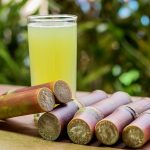
Press release
New report shares how farmed trees, wood and fibre can be the root of a sustainable future amid urbanisation and population growth through carbon sequestration and storage, as well as material substitution.
A new report – The growing role of forest products in climate change mitigation – launched at COP27[i] on 14 November, highlights that sustainable forestry operations and forestry policies vary across the globe and suggests that forestry and harvested wood products (HWPs) should not be overlooked as key drivers of a climate-resilient planet and green economic growth.
“Policymakers seem to miss the boat when it comes to the role of the global forestry and forest products sector in climate change mitigation,” says explains Jane Molony, executive director of PAMSA.
Forestry critics assert that all types of trees should be kept in the ground, regardless of their type and purpose, and perpetuate the myth that wood production causes deforestation. This is not the case. Many countries subscribe to certified and sustainable forestry practices to ensure that this doesn’t happen.
“Without a thriving forestry sector, the climate change goals outlined in the Paris agreement will be tough to meet,” says Molony. “Sustainable forest management sits at the root of a climate positive sector, along with the production of harvested wood products, including paper, serving to prolong the duration for which carbon is stored.”
The report presents a 3S Framework of Sequestration, Storage and Substitution, highlighting the role of HWPs in the carbon cycle and ultimately climate regulation.
Sequestration takes place during photosynthesis. Trees absorb carbon dioxide (CO2) for growth, storing the carbon and releasing the oxygen. Carbon then accumulates in the form of biomass, deadwood, organic litter and soils.
Storage is maintained when trees are harvested, and wood products become a pool of stored carbon. With half of the dry weight of timber as carbon, the carbon storage potential in long-life wood products and reductions of emissions from use of wood products is significant.
Substitution occurs when wood-based products replace carbon-intensive materials. To keep the goal of limiting warming to 1.5°C in play, countries need to use more timber in construction, more wood-based fibre in packaging, and more sustainably sourced cellulose in a vast range of products from biofuels to clothing to car parts and even pharmaceuticals. “We should even be printing more paper-based books for society,” adds Molony.
Locally, trees are planted, grown and harvested in line with international certification standards and local legislation. Only 6% of the country’s total plantation area – 1.2 million hectares – is harvested annually. The same area is replanted with new saplings – often at a ratio of two trees for each one harvested. This means there is a constant supply of carbon-capturing trees for productive purposes for years to come. It also supports employment and economic growth.
“It’s the circular nature of forestry where the largest long-term mitigation benefit can be achieved,” explains Molony. “By maintaining or increasing forest carbon stocks – trees – through rotational growing, harvesting and planting, we generate a sustained yield of carbon-storing timber and fibre.”
Detractors contend that planted forests negatively affect biodiversity and land use. Molony adds that sustainable forest management cannot be adopted in isolation of the protection of ancient and old-growth forests, the restoration of indigenous species and afforestation (tree farming) in suitable areas.
“Borrowing from our peer association in Brazil, we believe that the right trees need to be planted in the right place, at the right scale and for the right purpose,” notes Molony, alluding to the four R’s promoted by the international forestry sector.
“We have and always will need forests – and we need them more than ever before,” concludes Molony. “Natural and indigenous forests as well as planted forests or commercial timber plantations serve as a source to fulfil many of humanity’s needs and provide countless environmental services, most importantly carbon sequestration, storage and substitution.”
“In the long term, a sustainable forest management strategy aimed at maintaining or increasing forest carbon stocks, while producing an annual sustained yield of timber, fibre or energy from the forest, will generate the largest sustained mitigation benefit.” Intergovernmental Committee on Climate Change, 2007
[i] Ausfpa.com. 2022. Dalberg Report. [ONLINE] Available at: https://cdn.ausfpa.com.au/wp-content/uploads/2022/11/Dalberg-Report-compressed.pdf. [Accessed 14 November 2022].
OTHER USEFUL RESOURCES:
- The State of the World’s Forests (SOFO) 2022 – https://www.fao.org/publications/sofo/2022/en/
- Relevant Agribook pages include “Wood, pulp & paper” and “Forestry“







